
Cathy Ching/Medill News Service

Cathy Ching/Medill News Service
By Cathy Ching
Inside the flora-filled Bird Haven Greenhouse, tucked along the eastern edge of Joliet, Illinois, the high-pitched screams of children echoed over the soft sounds from the trickling waterfall.
These weren’t shouts of excitement — they were part of a lesson. Horticulture educator Nancy Kuhajda, from the University of Illinois Urbana-Champaign Extension Program, had instructed them to scream as a way to demonstrate what not to do if they encounter a wild animal. Instead, stay quiet and simply point, she advised.

About 40 fourth grade students congregated on Monday, March 10 for the return of Joliet’s Kids n Nature Adventure after school program held at Pilcher Park Nature Center. In its 22nd year, the 27-week immersive program is a partnership between the University of Illinois Extension Will County Master Naturalists, Joliet District 86 public elementary schools, and the Joliet Park District. As children in urban areas are becoming less curious about the outdoors, the program inspires kids to become “nature warriors,” Kuhajda said.
On the first day back for the immersive nature program, the kids began the afternoon in the Bird Haven Green House so Kuhajda could set out some ground rules.
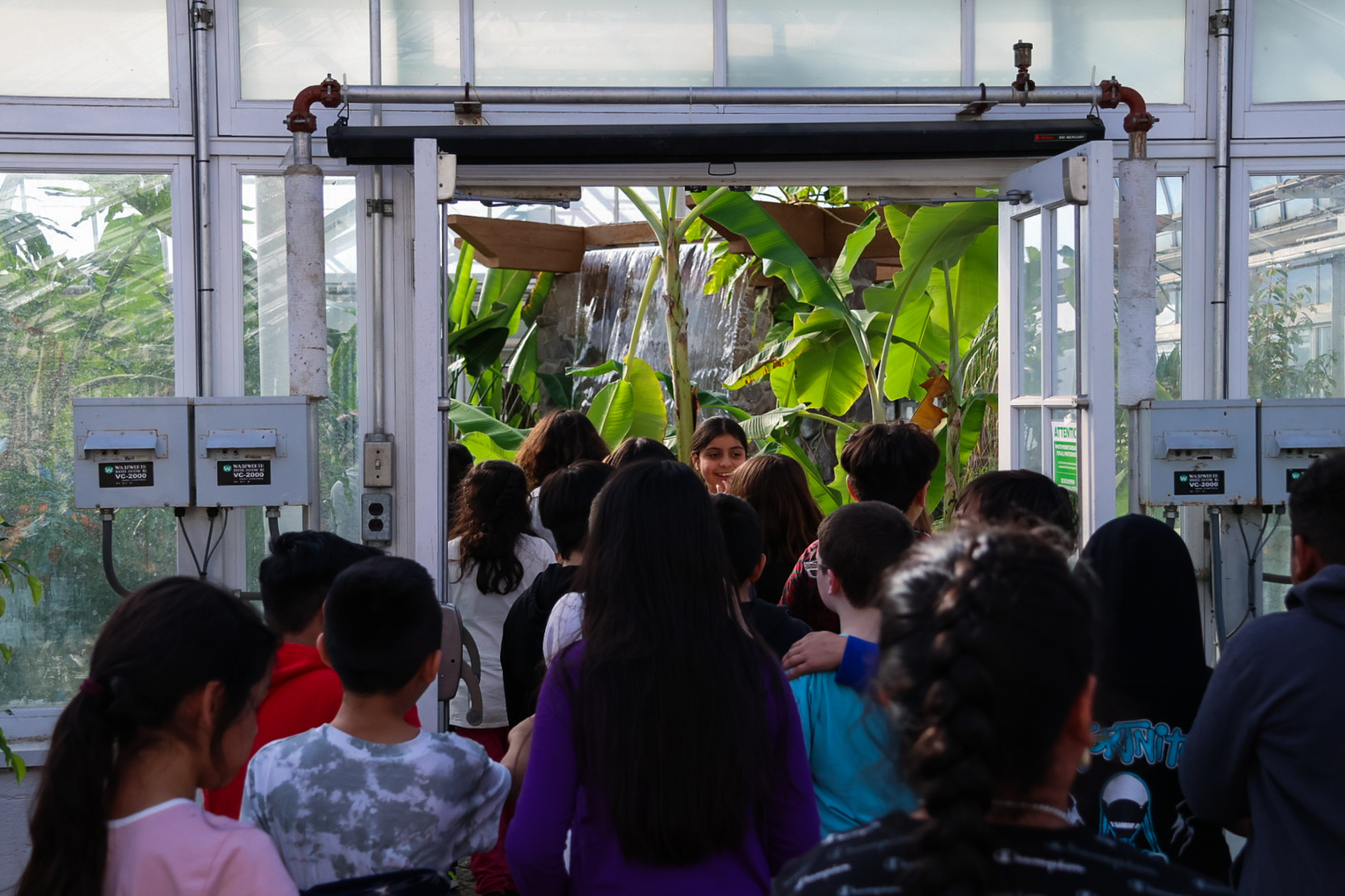
About 40 students from M.J. Cunningham Elementary School and Isaac Singleton Elementary School befriended one another through the nature program.
“The idea is to expose a person of any age, really, to get out in nature because for a long time, as our interest in technology has increased, that requires a lot of time and people have spent less and less time in nature,” Kuhajda said. “COVID, although being a terrible tragedy, did some good. And in our case, it returned people to going outside.”
Although the spring session of Kids n Nature Adventure is open for most fourth graders in Joliet’s public schools, the summer session is specifically targeted to students from six underserved schools with children in low-income households or those who have special needs, Kuhajda said.

Experts, such as horticulture and landscape design professor Andrea Faber Taylor at University of Illinois Urbana-Champaign, have studied the impacts of children growing up in urban environments.
Whether due to technology, lack of green space, safety, busy parents, or other factors, children are losing the many physical and psychological benefits that come with connecting with the environment.
“We know that when children have even just views of green space, they’re better able to pay attention, control impulses, and set better self-control,” Faber Taylor said. “There’s work showing that they’re more likely to grow up to be stewards of the Earth if they have opportunities when they’re younger to play in nature.”
One of the best benefits, Kuhajda said, is the students’ increase in confidence as they spend more and more time in nature.
“I have been here since the start,” Kuhajda said, “and it’s just so rewarding.”
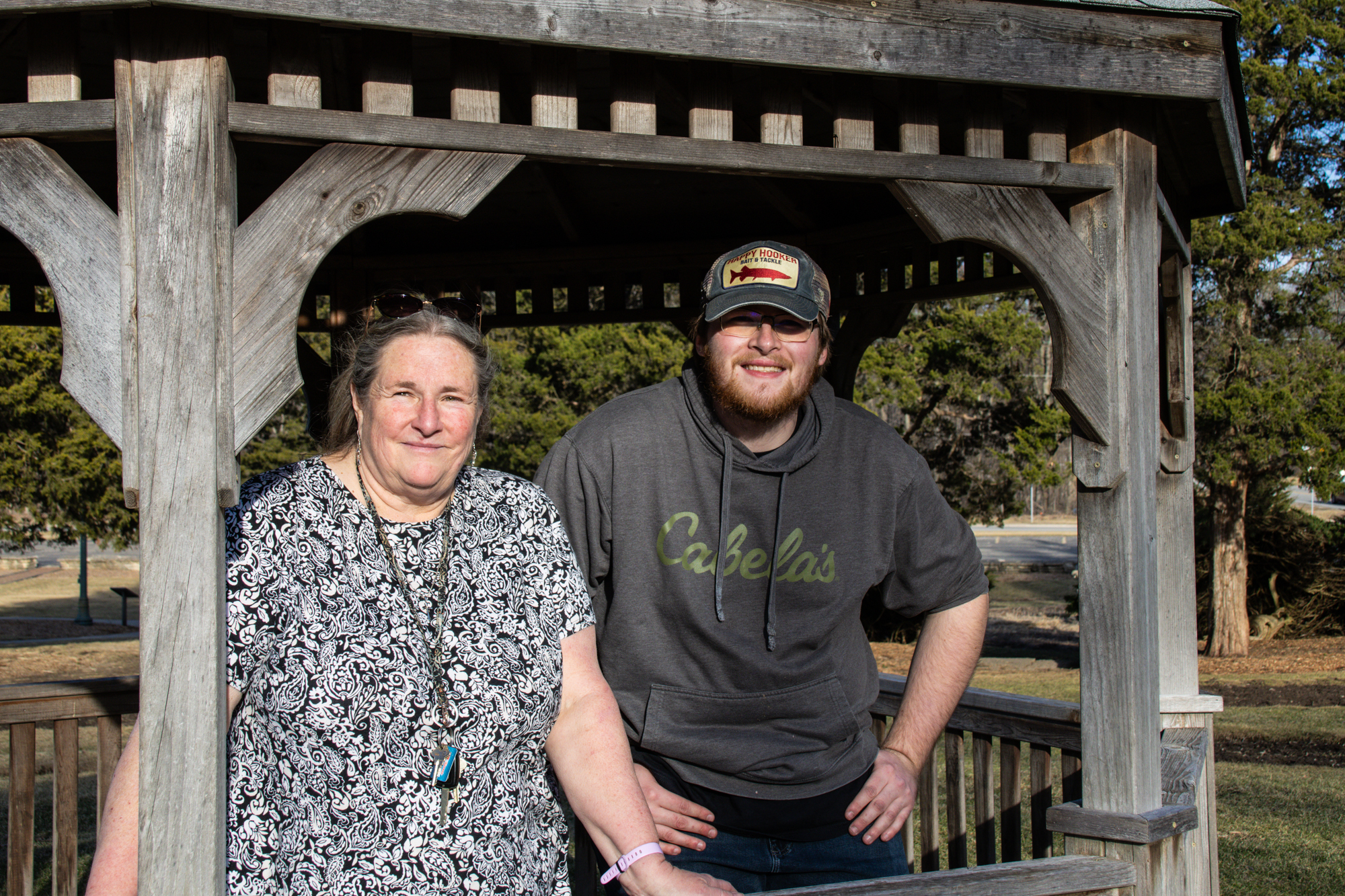
Prior to students’ enrollment of the Kids n Nature Adventure program, Kuhadja told parents to send their children wearing “play clothes.” Students take turns rolling down a small hill near Joliet’s Bird Haven Greenhouse to help them get “dirty” in order to connect with the environment. It’s “all part of the nature immersion,” Kuhajda said.


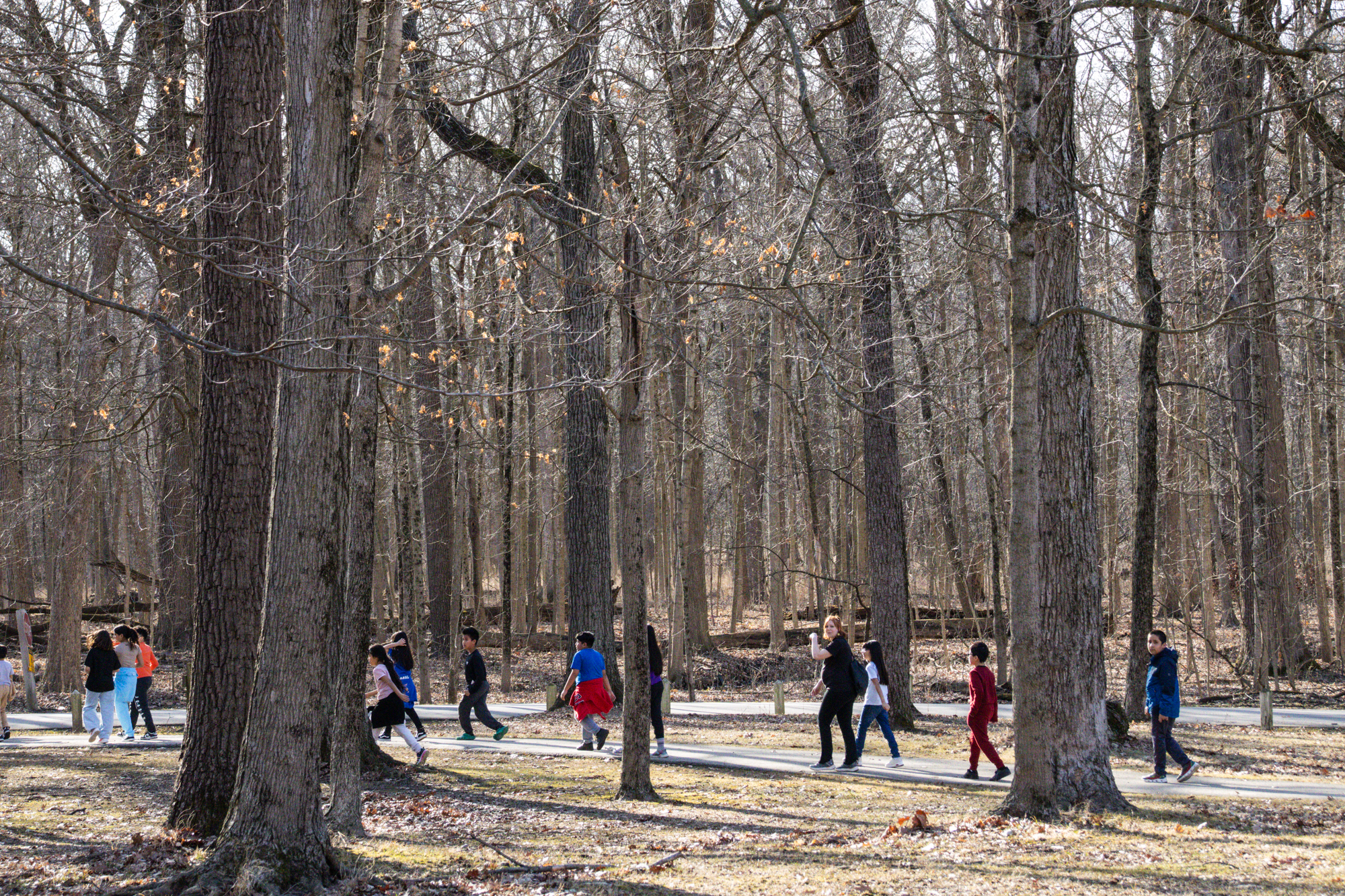
Naturalist Ryan Schoeling instructed the students to raise two fingers above their heads in the woods of Joliet’s Pilcher Park Nature Center after he spotted deer tracks on the ground.
“And how we can tell is deer are what’s called an ungulate, which is an animal that has hooves, like a horse,” Schoeling told the students. “But deer have two hooves, so it’s like taking your two fingers, they fit perfectly in that track.”
Students took turns fitting two fingers into the deer tracks in the woods. The immersive Kids n Nature Adventure program encourages students to be curious about wildlife, even if they never thought much about it before, Kuhajda said.


“One of the other works that goes along with letting kids play in nature shows the value of risk taking,” Faber Taylor said. “That’s missing from a lot of children’s play now when you’re in a green space.”

Schoeling demonstrated how the staff usually get sap from a maple tree in the woods on the second week of the nature program. Maple sap is about 3% sugar, which would taste similar to a glass of water, Schoeling told the students.
Schoeling also showed the kids burnt maple sap after it’s heated up in the evaporator in the Sugar Shack of Joliet’s Pilcher Park Nature Center. “You see all that stuff in there?” Schoeling said. “That’s a combination of carbon, bark, sticks, leaves and lobes. That’s why we have that filter, because we don’t want that stuff going in our syrup, right?”

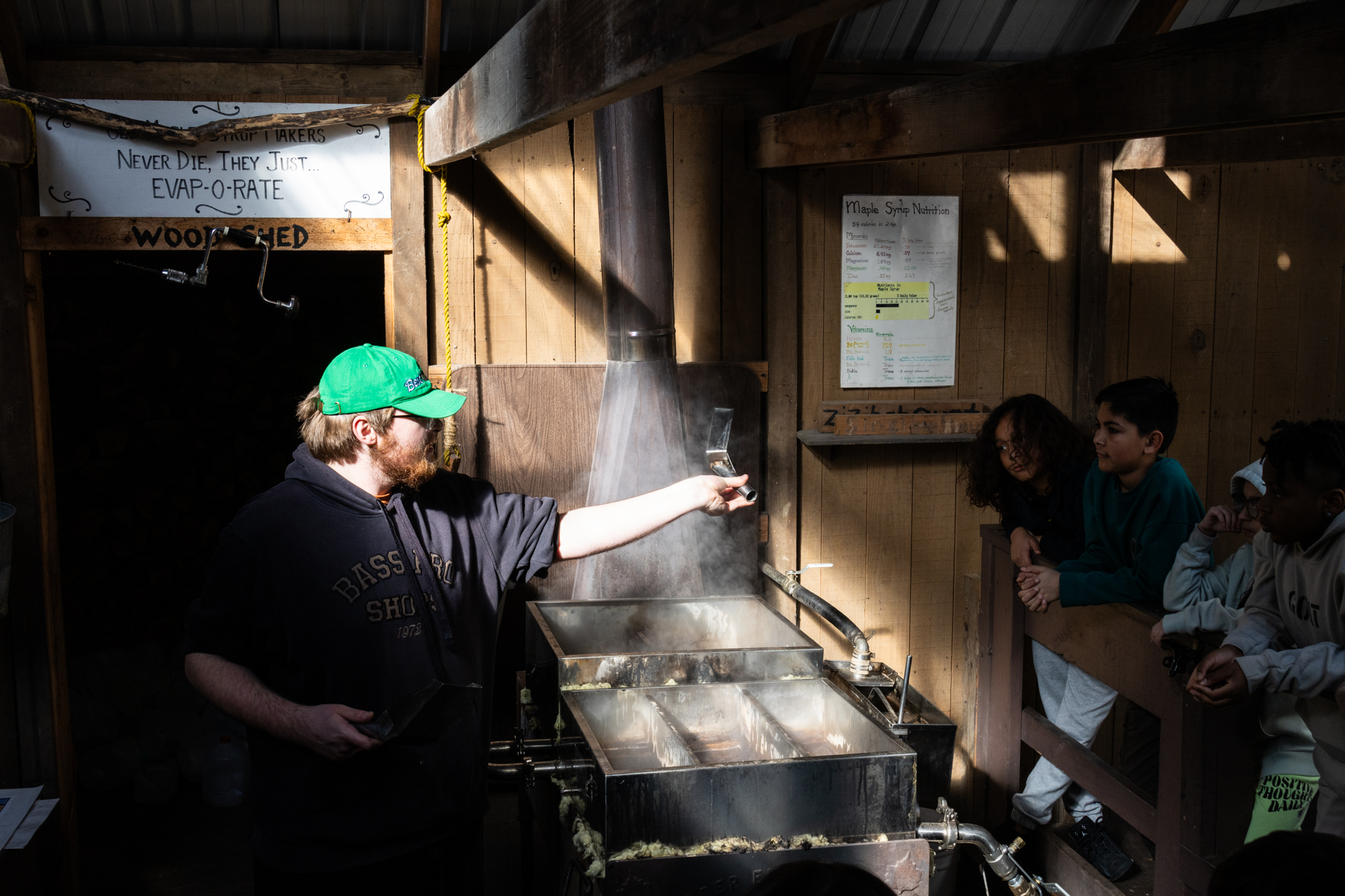
Looking at the students through a bottle of Grade A Amber syrup, Schoeling told them that cooking the sap longer results in dark amber syrup which is sweeter but sells for less.
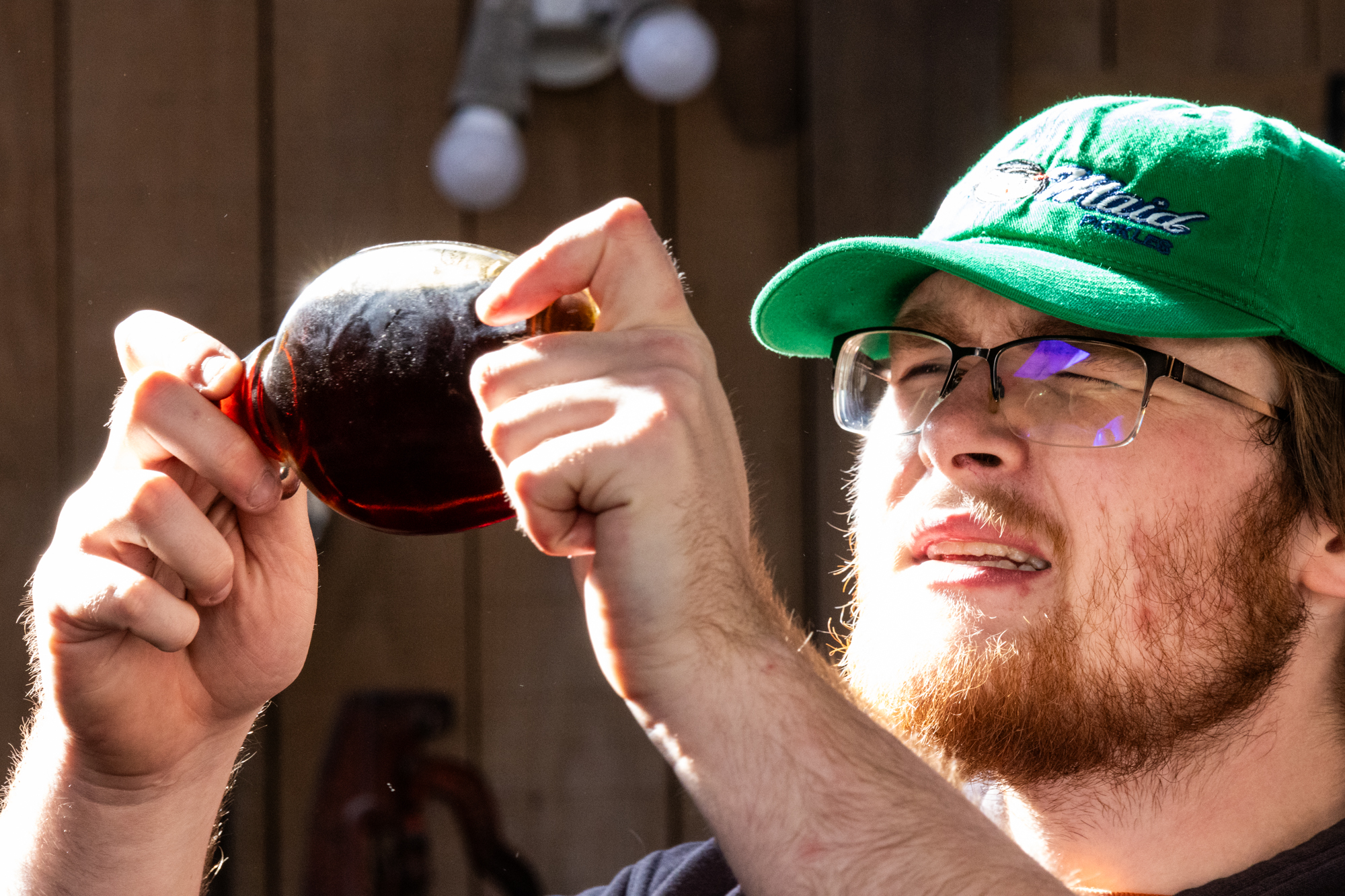
The 27-week program has invited elementary school students from all over Joliet every year to form close friendships with one another.
